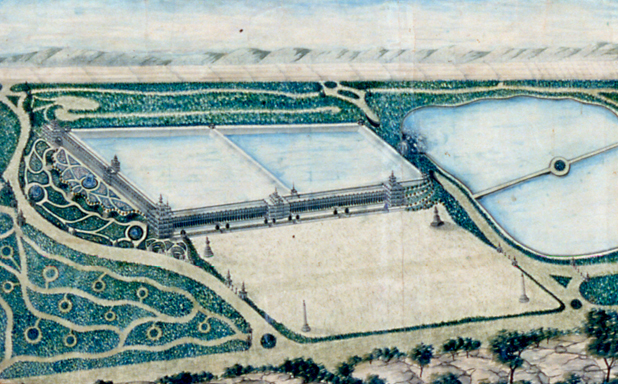
March 20, 1858. New-York Historical Society Library.

In 1857 the Central Park Commission held a contest to improve the landscape design of the newly opened park. Thirty three entries were submitted, only five of which have survived today.

Two of the rejected designs are currently on display at the New-York Historical Society, giving us a look at the Central Park that might have been. One is a spectacular design by John Rink, filled with formal gardens in elaborate decorative patterns and shapes. Rink was an engineer who had been employed in the initial years of the park’s creation.
In a publication celebrating the 150th anniversary of Central Park in 2003, the Rink design was aptly described at “a folk-art fantasy of Versailles . . . indifferent to topography, filled with ornate symmetries, and crammed with ornamental features.”1
To learn more about Rink’s work and the other rejected design on display, see this post on the New-York Historical Society website.
This is quite a find! Can’t wait to share it!
Another aspect of design was also changed. The new oval shaped reservoir was originally designed as a much larger rectangular shape, very similar to the original reservoir between 79th and 86th st. Park designers convinced the city to let a more natural “lake” be built instead. It is what we see today.